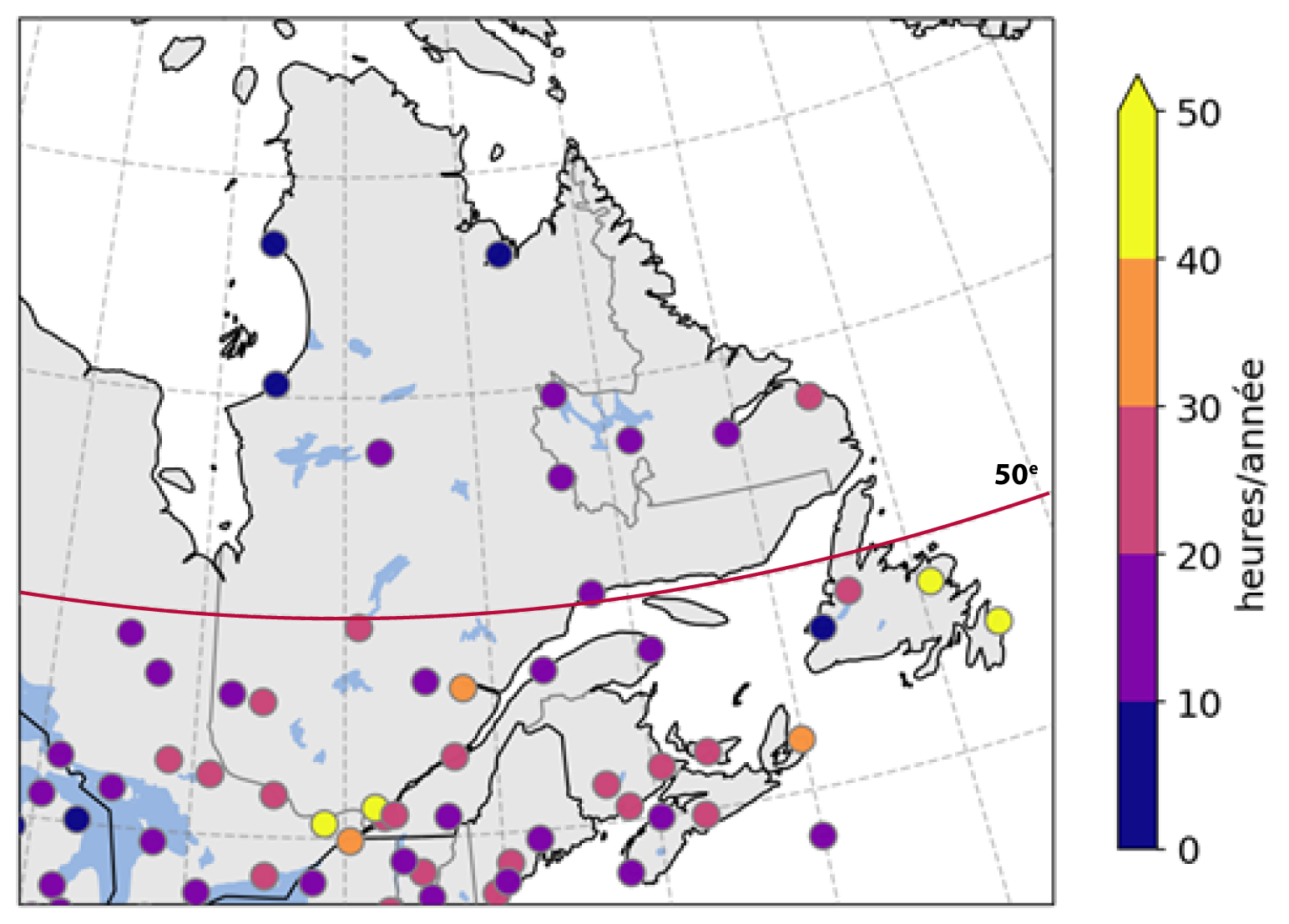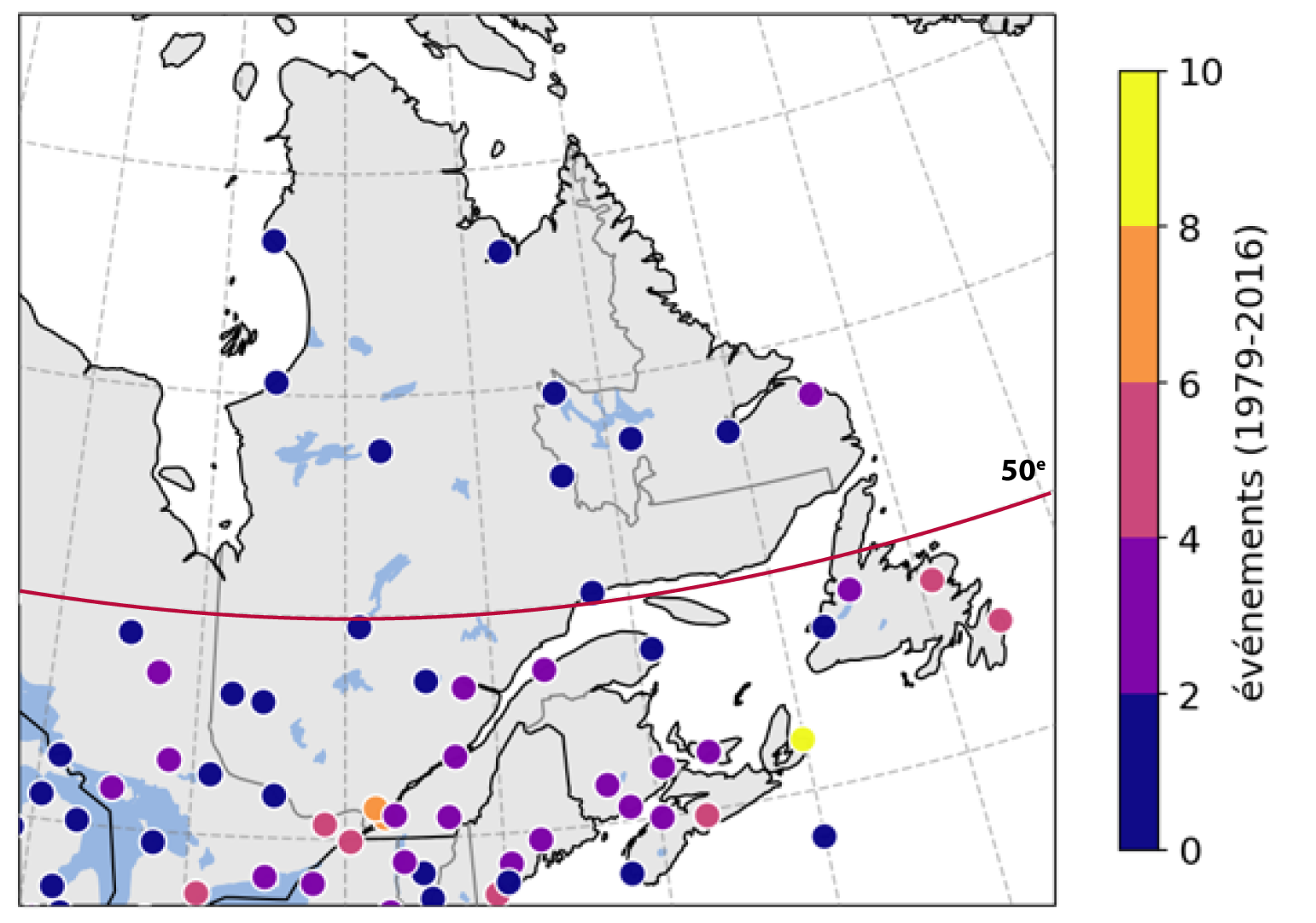Freezing rain
The complex and very local nature of freezing rain poses challenges for data collection. Observations of freezing rain generally indicate its occurrence rather than its accumulation, so data is often expressed in terms of hours rather than the amount of ice buildup.
Learn more about the changes to freezing rain in Québec.
Between 1979 and 2016, observations show a higher median number of annual hours of freezing rain (Fig. 3) in the St. Lawrence and Outaouais valleys, reaching 40 to 50 hours per year, followed by the Saguenay with values of 30 to 40 hours per year.
In eastern Quebec and Côte-Nord, we generally see between 10 and 20 hours of freezing rain a year. This number gradually decreases as you move north of the 50th parallel, and stations on the shores of Hudson Bay and Ungava Bay record less than 10 hours of freezing rain per year.

Figure 3: Median number of hours of freezing rain observed annually at weather stations, 1979-2016. Data from McCray et al. (2019).
It’s important to note that within a given region, topographical features and variations in temperature profiles can give rise to significant differences in the annual number of hours of freezing rain over short distances.
Freezing rain depends on the specific climate in each area. In southern Quebec, episodes of freezing rain are generally more frequent in December and January, in late autumn, and, to a lesser extent, in February and March. In northern Quebec, where winters are more vigorous, freezing rain occurs mainly in the spring and sometimes in the fall.
Extreme freezing rain episodes
The most severe ice storm events are generally associated with a long period of freezing rain, i.e. episodes lasting more than 6 hours. They account for around 20% of North American episodes. The most extreme episodes, like the 1998 ice storm, are very rare in Quebec. They are characterized by a duration of 18 hours or more. Over the entire period from 1979 to 2016, most weather stations recorded fewer than four of these events, with the exception of Mirabel and Dorval, which recorded 7 and 6 respectively, as shown in Figure 4.

Figure 4: Number of freezing rain events exceeding 18 hours observed at weather stations, 1979-2016. Data from McCray et al. (2019).